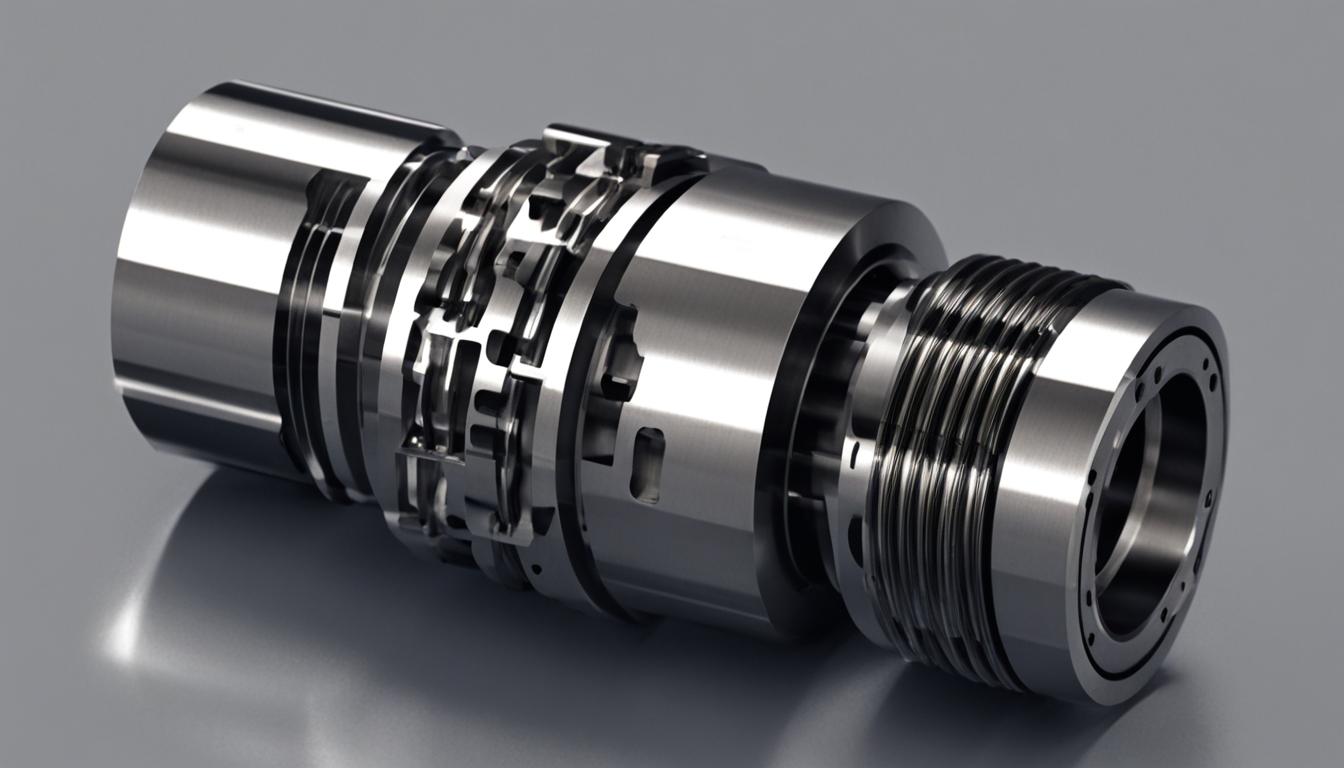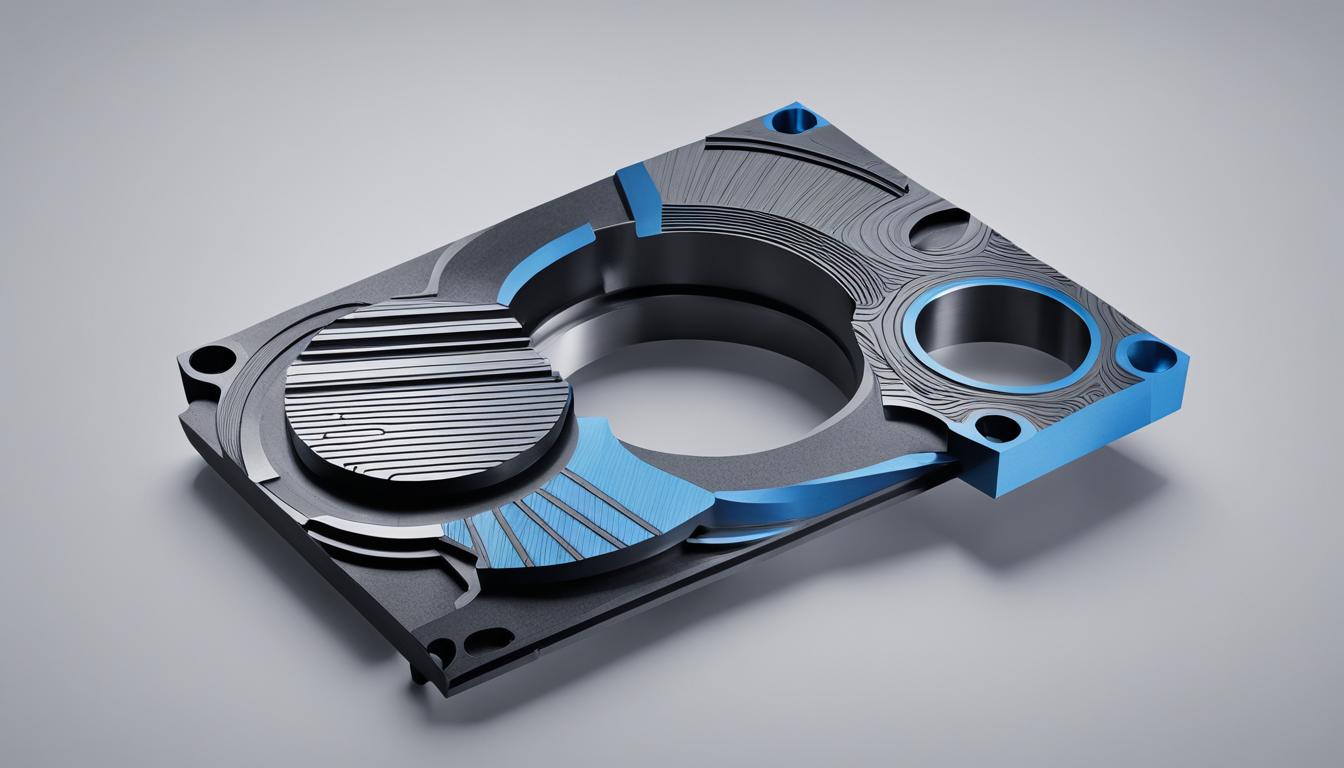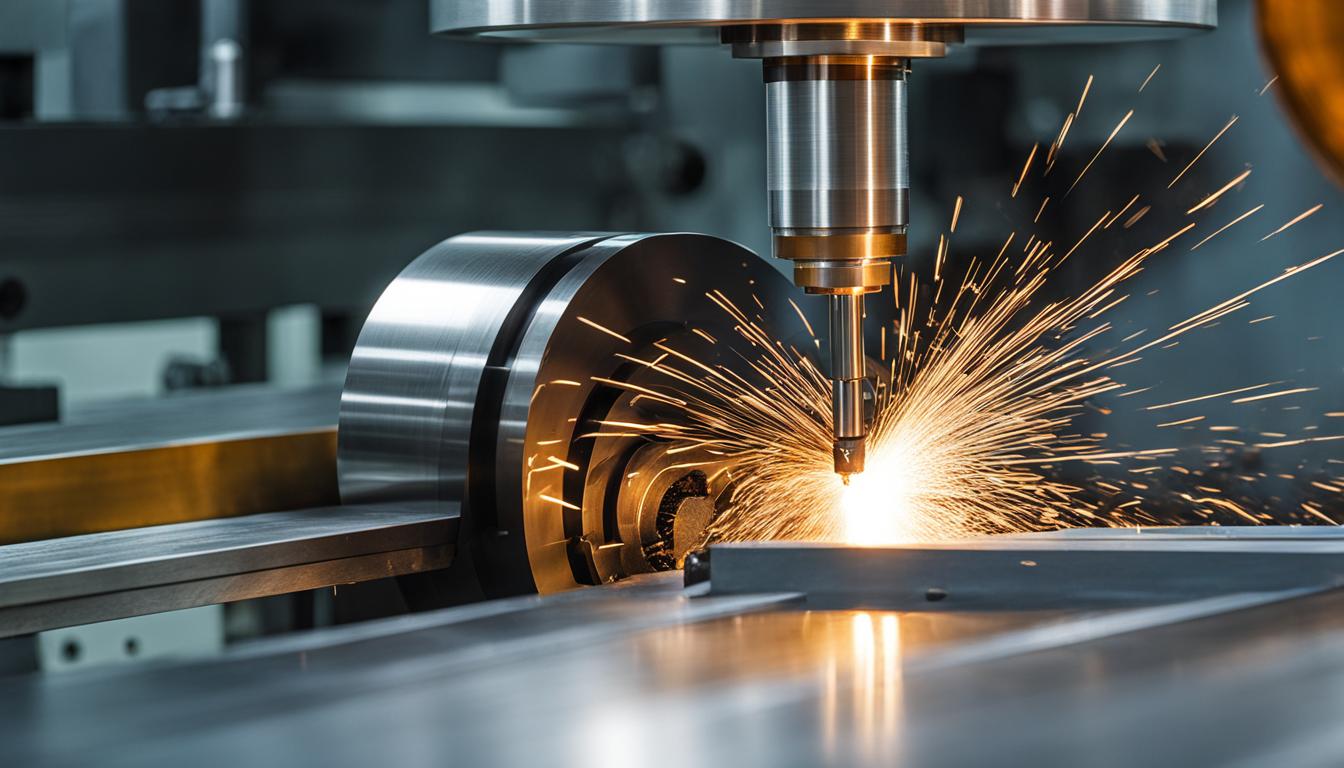Turning and milling are two distinct machining processes used in manufacturing, each with its own unique characteristics and applications. Turning involves rotating the workpiece while a single-point cutting tool removes material to create cylindrical parts. This process is ideal for producing round or cylindrical components such as shafts, pins, and bolts.
Milling, on the other hand, uses a rotating multi-point cutting tool to remove material from a stationary workpiece. This versatile method is suitable for creating a wide range of shapes, including flat surfaces, slots, and complex 3D geometries. The key differences between turning and milling lie in their tool movement, workpiece orientation, and the types of parts they can produce. Turning is generally faster for creating symmetrical, round parts, while milling offers greater flexibility for producing complex shapes and features.
The choice between turning and milling depends on factors such as the desired part geometry, material properties, production volume, and required surface finish. Understanding these differences allows manufacturers to select the most appropriate machining process for their specific needs, optimizing production efficiency and part quality.
What is Turning?
Turning is a machining process that involves rotating a workpiece against a cutting tool. During this process, the workpiece, typically round bar stock, is securely held in a chuck and spun by a spindle at a preset RPM. A stationary cutting tool is then applied to the rotating workpiece, removing unwanted material and shaping the component to the desired specifications.
Turning is an integral part of precision machining, and it often utilizes Computer Numerical Control (CNC) technology for enhanced accuracy and efficiency. This advanced technology allows for precise control over the cutting tools and workpiece movements, ensuring the creation of intricate designs and precise dimensions.
The turning process is suitable for a wide range of materials, including metals such as aluminum, steel, brass, copper, and titanium. It is also effective for working with thermoplastics. By utilizing subtractive manufacturing, turning generates chips of waste material as the cutting tool machines out the required features, resulting in the creation of highly precise and customized components.
To better understand the turning process, let’s take a look at an image depicting a turning setup:
What is Milling?
Milling is a machining process that involves a cutting tool rotating and moving against a stationary workpiece. Unlike turning, where the workpiece rotates, milling relies on the movement of the cutting tool. The workpiece can either be fixed or move between operations while the cutting tool removes material to shape the workpiece.
CNC milling, which stands for Computer Numerical Control milling, has revolutionized the milling process by replacing manual milling and enabling faster production of complex shapes. With CNC technology, precise movements and operations are controlled by computer programs, resulting in highly accurate and efficient machining.
Milling can be performed on various materials, including metals, plastics, composites, and wood. It offers versatility and flexibility in producing a wide range of components and parts with different shapes and sizes.
There are different types of milling operations, each with its own characteristics and applications:
- Face milling: In face milling, the cutting tool removes material from the surface of the workpiece, resulting in a flat or contoured surface.
- Peripheral milling: In peripheral milling, the cutting tool removes material along the perimeter of the workpiece, creating a desired shape or contour.
Milling machines come in various sizes and configurations, allowing for different cutting strategies and accommodating square or rectangular bar stock. The choice of milling method and machine depends on the specific requirements of the project and the desired outcome.
| Milling Method | Characteristics | Applications |
|---|---|---|
| Face Milling | Removes material from the surface of the workpiece | Creates flat or contoured surfaces, prepares surfaces for additional operations |
| Peripheral Milling | Removes material along the perimeter of the workpiece | Produces desired shapes or contours, creates slots or grooves |
Similarities Between Turning and Milling
Although turning and milling are distinct machining processes, they share several similarities in their approach and application. Both turning and milling fall under the category of subtractive manufacturing, a method that involves material removal, enabling the creation of complex shapes and precision components. This is accomplished using advanced Computer Numerical Control (CNC) technology, which ensures accurate and consistent machining results.
Another common feature between turning and milling is the broad range of materials that can be processed. Both techniques are suitable for working with various metals such as aluminum, steel, brass, copper, and titanium. Additionally, they can also be applied to thermoplastics, expanding the possibilities for manufacturing across different industries.
One important aspect of machining operations is managing the heat generated during the cutting process. Both turning and milling processes produce heat, which can have adverse effects on the workpiece and cutting tool. To control and dissipate this heat, cutting fluid is often employed. This essential lubricant not only helps in temperature regulation but also improves tool life and surface finish.

| Similarities Between Turning and Milling |
|---|
| Subtractive manufacturing techniques |
| Utilize CNC technology |
| Suitable for a wide range of materials, including metals and thermoplastics |
| Generate heat during operation |
| May require the use of cutting fluid |
CNC Turning Distinctions
In CNC turning, a workpiece is held in a chuck and rotated by a spindle while a stationary cutting tool shapes the component. The cutting tool continuously applies pressure to the rotating workpiece to remove material and create the desired features. CNC turning machines, such as lathes and CNC Swiss turning machines, offer various tooling options, spindle options, and outer diameter limitations. Some CNC lathes have one spindle, while others have a main and sub-spindle for increased versatility. CNC Swiss turning machines can also utilize “live” tooling to stop rotation and add additional features to the turned parts.
| Component | CNC Turning | CNC Milling |
|---|---|---|
| Movement | Workpiece rotates, cutting tool is stationary | Cutting tool moves and rotates, workpiece is fixed |
| Shapes Produced | Cylindrical or conical | Flat or sculptured surfaces |
| Tooling | Stationary cutting tool | Rotating cutting tool with multiple cutting surfaces |
| Materials | Metal, wood, plastic | Metal, plastic, composites, wood |
The distinctions between CNC turning and milling are evident in the movement of the workpiece and tooling, the shapes produced, the types of cutting tools used, and the materials they can effectively machine. CNC turning is ideal for cylindrical or conical components and is suitable for various materials like metal, wood, and plastic. On the other hand, CNC milling excels in creating flat or sculptured surfaces and is versatile enough to handle metals, plastics, composites, and wood.
CNC Milling Distinctions
In CNC milling, a cutting tool rotates and moves against a stationary workpiece to remove material and shape the component. This distinctive process offers several key distinctions and capabilities that set it apart from other machining methods:
- Milling Machine: CNC milling utilizes specialized milling machines, which are capable of precise and controlled movements.
- Cutting Tools: The cutting tools used in CNC milling are designed with multiple cutting surfaces to optimize material removal and shaping.
- Face Milling: One of the common milling operations is face milling, which involves cutting at or near the corners of the cutting tool. This allows for efficient removal of material across the face of the workpiece.
- Angular Milling: Angular milling is another milling operation that involves cutting at various angles. This enables the creation of intricate features and complex geometries.
- Milling Operations: CNC milling machines offer versatility by providing a wide range of milling operations, including but not limited to face milling, peripheral milling, slot milling, and contour milling. These operations allow for the production of various shapes and intricacies.

Overall, CNC milling stands out for its ability to precisely remove material and shape components using specialized milling machines and cutting tools. The range of milling operations and the flexibility to work with different materials make it a valuable process in precision manufacturing.
| Milling Distinctions | Key Features |
|---|---|
| Milling Machine | Precision and controlled movements |
| Cutting Tools | Multiple cutting surfaces |
| Face Milling | Efficient material removal across the face of the workpiece |
| Angular Milling | Creation of intricate features and complex geometries |
| Milling Operations | Versatility in producing various shapes and intricacies |
Comparison Between Turning and Milling
The main difference between turning and milling lies in how the workpiece and tooling move. In turning, the workpiece rotates while the cutting tool typically remains stationary. In milling, the cutting tool moves and rotates while the workpiece remains fixed. This distinction leads to the production of different shapes in each process. Turning primarily produces cylindrical or conical shapes, while milling is commonly used for flat or sculptured surfaces. The choice between turning and milling depends on the specific part design and desired features.
To summarize:
| Turning | Milling |
|---|---|
| Workpiece Rotation | Workpiece Fixed |
| Cutting Tool Stationary | Cutting Tool Moves and Rotates |
| Cylindrical or Conical Shapes | Flat or Sculptured Surfaces |
As shown in the table and image above, turning and milling have distinct characteristics that make them suitable for different applications. Understanding the differences in workpiece and tooling movement, as well as the shapes produced, helps manufacturers choose the appropriate machining process for their specific needs.
Factors to Consider in Choosing Between Turning and Milling
When deciding whether to use turning or milling for a project, several factors should be considered. The choice between turning and milling depends on the specific requirements of the project, including project considerations, complexity of geometry, and dimensional tolerances.
Project Considerations
One important factor to consider is the nature of the project itself. If the part has axially symmetric features, CNC turning may be the preferred choice. Turning is well-suited for cylindrical or conical shapes, making it ideal for parts with relatively large lengths and diameters. On the other hand, if the part requires more complex geometry, CNC milling may be the better option. Milling can achieve highly intricate shapes, including flat or sculptured surfaces, and is capable of meeting tight dimensional tolerances.
Complexity of Geometry
The complexity of the part’s geometry is another crucial consideration. CNC turning excels at producing simple geometric shapes, such as cylinders and cones, with precise dimensional tolerances. It is particularly effective for parts with axially symmetric features, where rotational symmetry is required. Conversely, CNC milling offers greater versatility for complex geometric designs. With its ability to move and rotate the cutting tool in multiple axes, milling can produce intricate shapes with higher precision and meet tighter dimensional tolerances.
Dimensional Tolerances
Dimensional tolerances play a vital role in determining which machining process to choose. Turning can effectively produce precise dimensional tolerances for parts with relatively large lengths and diameters. It is well-suited for achieving tight tolerances on cylindrical or conical features. Milling, on the other hand, offers excellent dimensional accuracy for complex shapes. It can achieve tight tolerances on flat or sculptured surfaces, making it suitable for intricate designs and precise geometric requirements.
By considering project considerations, complexity of geometry, and dimensional tolerances, the optimal machining process can be determined, whether it be turning or milling. Understanding the factors at play is essential in selecting the most suitable machining technique to ensure the successful production of high-quality components.
Applications of Turning and Milling
Turning and milling are widely applied in various industries due to their versatility in precision machining. Each process has distinct applications that cater to different manufacturing needs.
Applications of Turning
Turning is commonly used for producing components such as screws, bolts, and high-precision aerospace or automotive parts. It is a preferred choice for creating cylindrical or conical shapes with precise dimensional tolerances. Turning can effectively machine materials like wood, plastic, and metal, making it adaptable to diverse industries.
Applications of Milling
Milling offers endless possibilities for manufacturing due to its ability to produce simple and complex shapes. This makes it suitable for a wide range of applications, such as jewelry, automotive components, and aerospace parts with intricate geometries. With CNC milling, precise and intricate features can be achieved, meeting tight dimensional tolerances required by various industries.
The versatility of both turning and milling makes them adaptable to specific industry requirements across precision manufacturing.
| Turning | Milling |
|---|---|
| Produces cylindrical and conical shapes | Produces flat and sculptured surfaces |
| Used for screws, bolts, aerospace parts, automotive parts | Used for jewelry, automotive components, aerospace parts with intricate geometries |
| Adaptable to wood, plastic, and metal | Adaptable to various materials: metals, plastics, composites, and wood |
| Offers precise dimensional tolerances | Achieves tight tolerances and complex features |
Conclusion
In conclusion, turning and milling are two essential machining processes in precision manufacturing. While they share similarities as subtractive manufacturing techniques using CNC technology, their distinct functions and applications set them apart. Turning is characterized by rotating the workpiece against a stationary cutting tool, while milling involves moving and rotating the cutting tool against a fixed workpiece. The choice between turning and milling depends on factors such as part design, complexity, and dimensional tolerances. Understanding the differences between turning and milling helps determine the optimal machining process for a specific project in precision manufacturing.
Turning is ideal for parts that require cylindrical or conical shapes, such as screws, bolts, and high-precision aerospace or automotive components. It is versatile in machining various materials, including wood, plastic, and metal. On the other hand, milling offers endless applications and is suitable for producing flat or sculptured surfaces, intricate geometries, and complex shapes. It finds uses in jewelry, automotive components, and aerospace parts.
When deciding between turning and milling, factors like part design, complexity, and dimensional tolerances should be considered. If a part has axially symmetric features, CNC turning may be the preferred choice, while CNC milling is suitable for parts that require more complex geometry. Both processes offer precision and can be adapted to meet specific industry requirements in sectors like aerospace, automotive, and general manufacturing.
